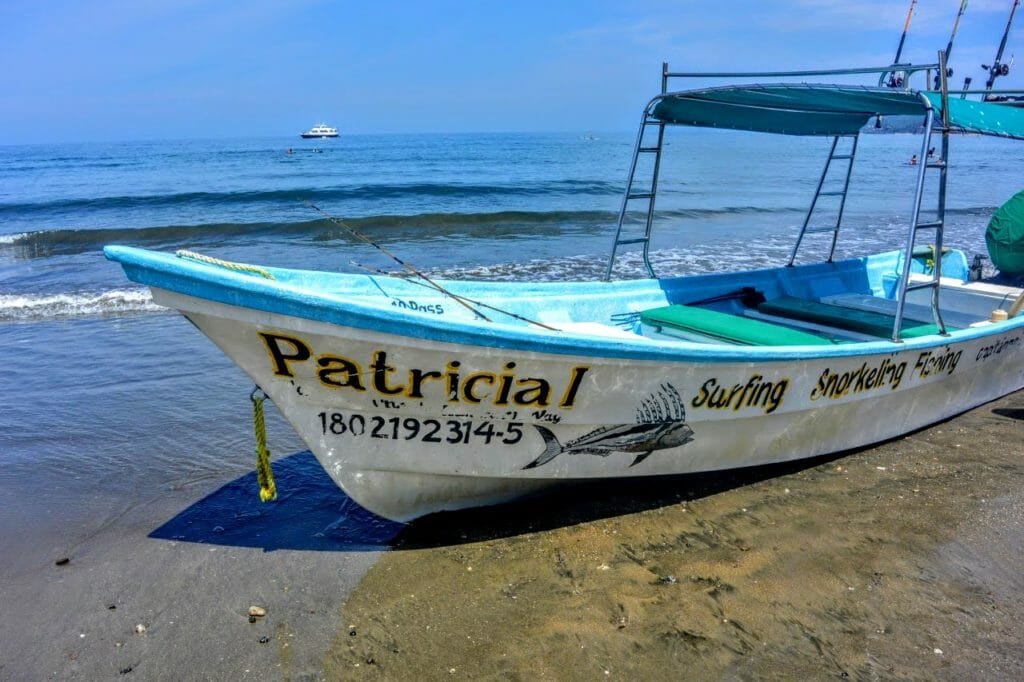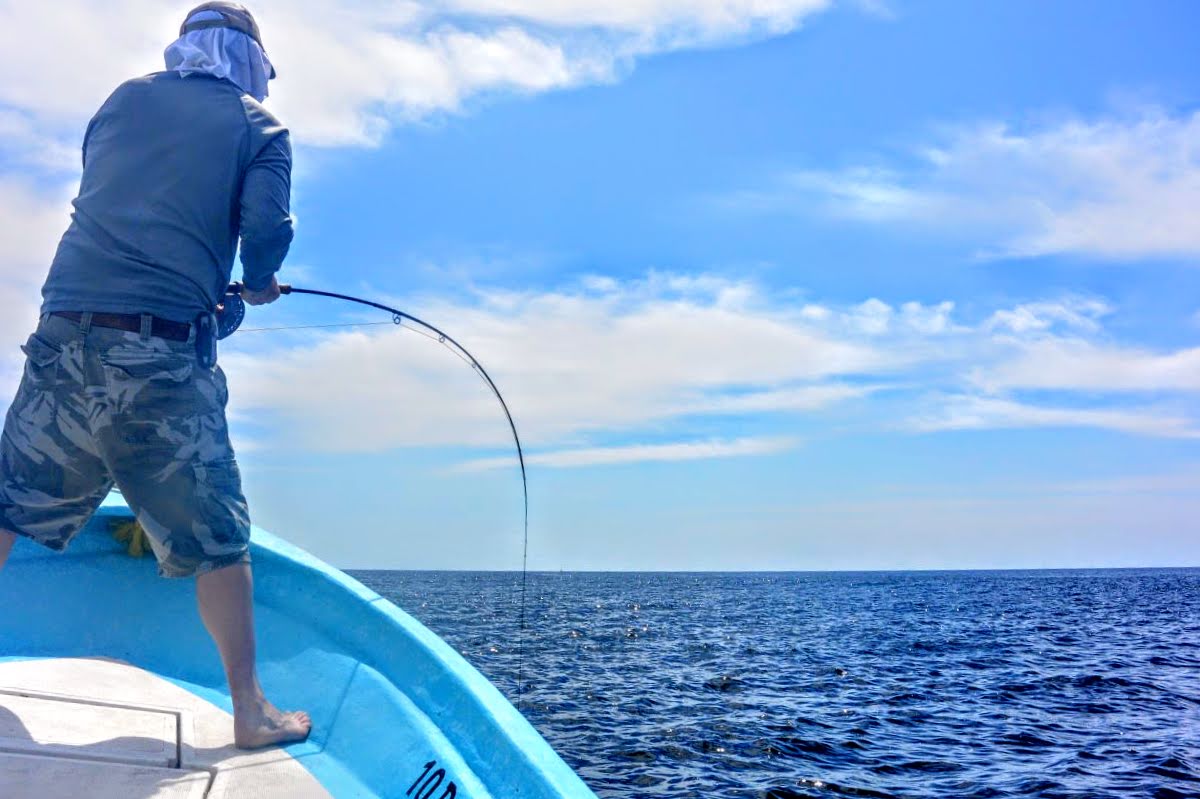Fly fishing from a boat is a dance, rarely elegant and frequently anything but. While some watercrafts and bodies of water are more conducive to shaking a leg while wetting a line, a partly covered panga (which truthfully only accommodates approximately 1.5 fly anglers) rolling with tide of the Pacific Ocean will never be high on the list of suitable dance floors. South of the border and 4,500 miles away from the glacial rivers and cold creeks that I call home, I am out my element and embracing it.
In Alaska, I practice a dance akin to the “Drift Boat Slide,” where everyone’s drift falls in line. In Mexico, my panga dance is a “Drunken Two-step” at best, and a “Salty Dip” at worst.
Crashing pelicans and diving terns are the anglers’ North Star and our local guides immediately orient the boat to chase down the commotion of bait balls and feeding fish. In an unending ocean, this is your honey hole. Ours was well over a quarter mile wide, erupting with a chaotic disruption unfamiliar in trout fishing.
The dance begins as the motor cuts out. The lead angler takes center stage on the elevated deck of the small vessel, abandoning the comfort of the lower lying hull. The initial step onto the slightly raised perch must be approached with caution and subsequent grasps for balance with clumsy foot work toward starboard, quickly to the port and back again, are customary flair in finding the desired, semi-solid footing.
As the boat drifts within casting reach of the mayhem — bait fish boiling on the surface, mackerel jumping and feasting, birds crashing from the sky for a beak-full — the chuck- and-duck begins and the dance progresses. The lead dancer feverishly delivers sloppy loops, stripping back their offering just as fast so they can pile on the casts while the fish are in range. The opportunity is over as quick as it begins.

Wobbles, small falls and dropped knees disrupt any semblance of rhythm and keep the chuckles coming from the gallery and every “fish on!” gets hoots across the boat, none more powerful than the jubilant captain in the back.
Wind knots stain your leader but are of little concern as the bow rope makes its rise as a sworn enemy, interrupting the dance while you once again struggle to free your fly line from its coiled constriction. As you quickly untangle, one can’t help but question how things will play out should your clouser minnow get picked up by a hungry torpedo.
Lone turtles swim by lazily, breaching humpbacks beg for attention, but the biggest distraction is less than 10 feet behind you, wielding a 9-foot rod of their own and trying to find their role in your erratic dance. When it comes to casting 2/O streamer hooks in close quarters and a stiff wind, I am damn thankful my partner has been fishing for longer than I have been alive.
In the end, we may have looked like two pasty trout anglers with unseasoned sea legs and poor dance moves to our guides, but the Spanish mackerel tacos were muy delicioso.
In the days ahead of our escape to the tropic of cancer, I dedicated hours on the AstroTurf floor of the nearby indoor sports complex dusting the rust of my cast and finding my double haul in an attempt to jump on the boat fully prepared to cast.
Turns out casting was only a fraction of the battle and my time would have been just as well spent in the backyard with dogs barking and chickens squawking amid frigid temperatures, all the while fumbling casts among the madness from the precarious perch of a medicine ball.
Eric Booton is the sportsmen’s outreach coordinator for TU’s Alaska Program.



